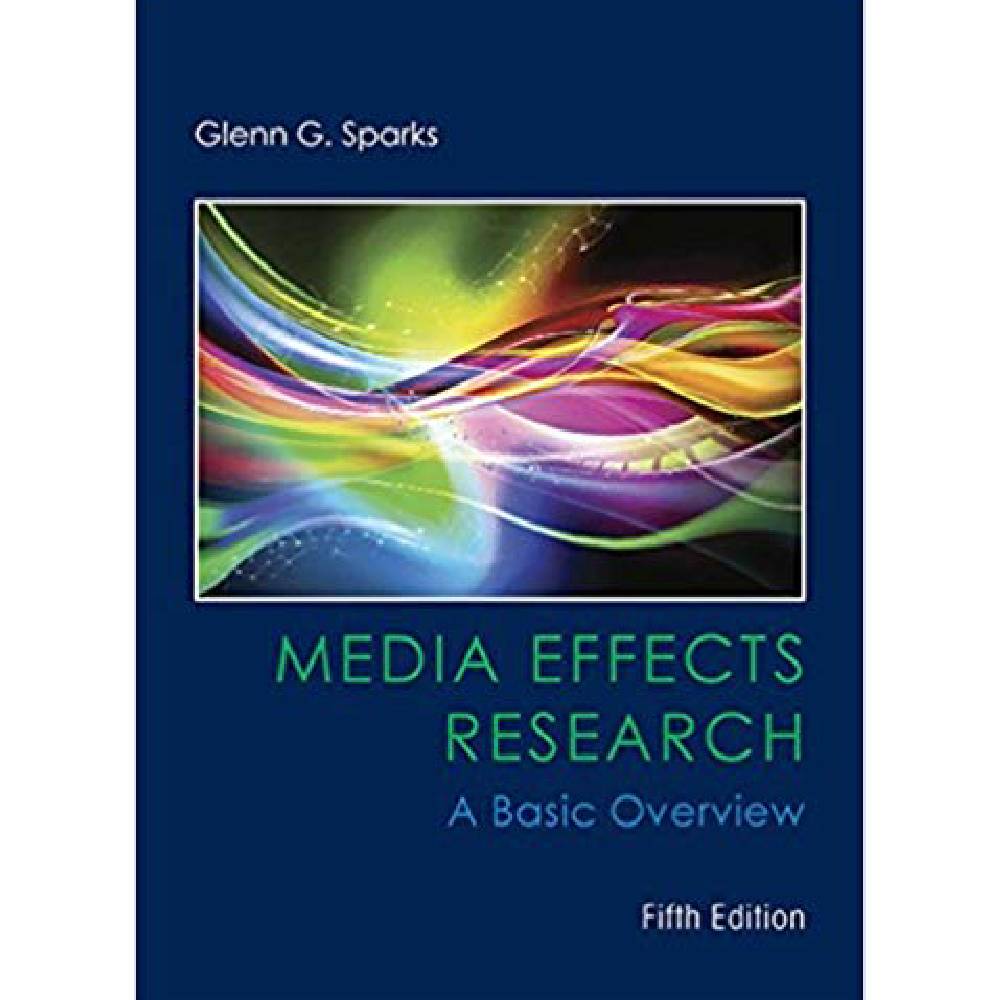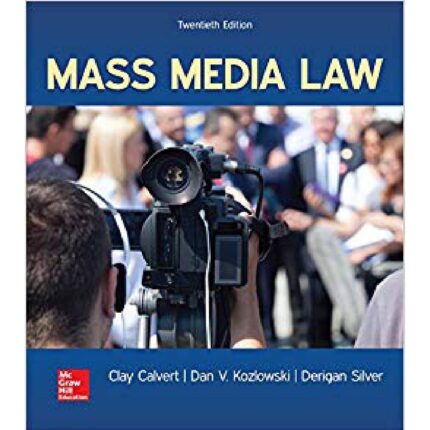Media Effects Research A Basic Overview 5th Edition by Glenn G. Sparks – Test Bank
NOTE: Correct answers are underlined.
Chapter 11
1. According to the text, “perpetual linkage” refers to which of the following?
a. the link between the verbal and the visual in dual-coding theory
b. the link between all of the senses that Marshall McLuhan developed in his
theoretical statement of 1967
c. the connection between virtual images of violence and violence in the real
world—as argued by Col. Grossman
d. the social comparison process whereby young girls link their own bodyimages with those that they see on TV or in the movies
e. the new tendency for youth to be constantly connected with each other
through some type of technology
2. According to the text, which of the following properly characterizes the results of the
Carnegie Mellon HomeNet Study on the effects of the Internet?
a. Use of the Internet was associated with a general increase in communication
with family members, a greater number of people in the social circle, and
decreased feelings of depression.
b. Use of the Internet was associated with a general increase in communication
with family members, a lower number of people in the social circle, and
decreased feelings of depression.
c. Use of the Internet was associated with a general decrease in communication
with family members, a greater number of people in the social circle, and
increased feelings of depression.
d. Use of the Internet was associated with a general decrease in communication
with family members, a lower number of people in the social circle, and
increased feelings of depression.
e. Use of the Internet was associated with an increase in violent and criminal
behavior among teenagers—but not among young children or older adults.
3. According to the text, which of the following statements describes the relationship
uncovered in one study between the tone of statements made in computer chats and
the amount of communication in the chat?
a. the more negative the comments, the more communication took place
b. the more negative the comments, the less communication took place
c. The tone of the comments and the amount of communication were both
related to the extent to which the people in the chat had hostile personalities.
d. The tone of the comments and the amount of communication were both
related to the extent to which the people in the chat had high need for
cognition.
e. The tone of the comments and the amount of communication were both
related to the extent to which the people in the chat were high sensation
seekers AND were early adopters of new technology.
4. According to the text, recent research shows that a key reason why hostility is so
prevalent in human interactions over the Internet is because:
a. people become frustrated about not being able to hear another person’s voice.
b. eye contact is missing and there is a general climate that creates an online
sense of unidentifiability.
c. people believe that more often than not, they are actually interacting with
other machines instead of with other humans.
d. all human interactions tend to be hostile—whether they take place over the
Internet or in person.
e. blue light from the computer screen stimulate brain hormones that tend to
trigger hostility and aggression.
5. According to the text, which of the following is TRUE about the study on
cyberostracism?
a. The video screen presented to some participants was not in color.
b. The study was able to track the social lives of the participants for three months
following their interaction online.
c. The study was able to include participants from 62 different countries.
d. The study was able to show conclusively that cyberostracism had little or no
impact on perceptions of control and feelings of belonging.
e. The major manipulation of the study featured a hostile male voice that had
previously been rated by a group of college students as extremely
intimidating.
6. According to the text, recent estimates suggest that about how many marriages begin
as an online contact?
a. 1 out of 20
b. 1 out of 10
c. 1 out of 7
d. 1 out of 5
e. 1 out of 3
7. According to the text discussion on media multiplexity theory:
a. close friends only communicate face-to-face
b. close friends communicate in many different ways (text, email, face-to-face,
mobile phone, Facebook, etc.)
c. close friends only communicate through Facebook
d. close friends only communicate through text and email
e. close friends only communicate through face-to-face and phone
8. According to the text discussion Joe Walther’s social information processing theory:
a. people cannot form close relationships over the Internet
b. people can form close relationships over the Internet—and it happens much
FASTER than face-to-face relationships
c. people can form close relationships over the Internet—but it happens much
SLOWER than face-to-face relationships
d. only people who are NOT shy can form close relationships over the Internet
e. people can form close relationships over the Internet and it happens at the same
pace as face-to-face relationships
9. According to the text, a recent study shows that users of Facebook:
a. have fewer close relationships than non-users but tend to trust other people
more than non-users
b. have more close relationships than non-users but tend to trust other people less
than non-users
c. have fewer close relationships than non-users and tend to trust other people
less than non-users
d. have more close relationships than non-users and tend to trust other people
more than non-users
e. are more narcissistic than non-users
10. According to the text, Clifford Nass appeared in a PBS documentary to share the
results of his research on multitasking. One thing he said in that video was: “Virtually
all multitaskers think they are ___________ at multitasking. And one of the big
discoveries is, you know what, you’re really _____________ at it. Which two words
properly complete the quote (first word in the first blank; second word in the second
blank)
a. lousy; brilliant
b. brilliant; lousy
c. brilliant; superb
d. lousy; pathetic
e. pathetic; awful










Reviews
There are no reviews yet.